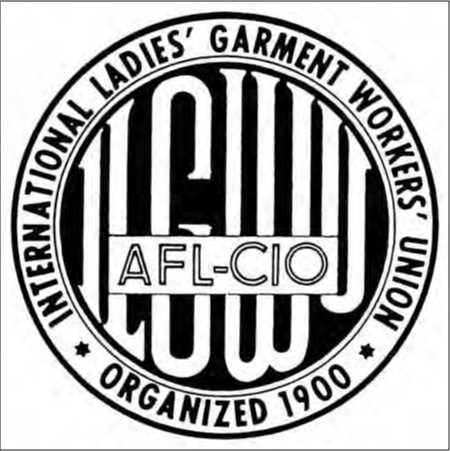Identification: Industrial labor union Dates: 1900-1995 Also known as: ILGWU
Significance: The International Ladies’ Garment Workers’ Union improved working conditions for garment makers, most of whom were immigrants. Under the leadership of David Dubinsky, himself an immigrant, the union became recognized as one of the most powerful labor unions in the United States.
The International Ladies’ Garment Workers’ Union (ILGWU), originally formed by the amalgamation of seven unions, at first consisted mostly of eastern European Jewish immigrants, although a few ofthe original two thousand members were of Irish descent. For years, the union was characterized by internal strife, mainly among the immigrants, many of whom were anarchists, socialists, or members of other radical groups; each group wanted to dominate the union. Still, the union grew.
From 1909 to 1911, large-scale strikes occurred in the garment industry. Most of the people in the picket lines were Jewish women, though a number of Italian immigrants also joined the lines. As a result of the strikes, clothing manufacturers agreed to deal directly with the ILGWU. Part of the settlement of the strikes involved the Protocol of Peace, which led to improved working conditions, increased wages, and shorter workdays for garment industry workers. The agreement was a departure from the strife that many of the immigrant members had brought to the union.

Official seal of the International Ladies’ Garment Workers’ Union. (The Granger Collection, New York)
The ethnic makeup of the ILGWU changed over the decades. In 1919, many Italian women’s unions were chartered as part of the ILGWU, and an even larger number of Italian immigrants joined the union during the 1930’s. Also during that decade, immigrants from Asian countries such as Syria, Lebanon, and Armenia entered the garment trade and eventually joined the ILGWU. Later, thousands of Latin American workers, including Puerto Ricans and Mexicans, entered the garment trade and became ILGWU members.
The union thrived under the leadership of David Dubinsky, a Polish immigrant who moved to New York City in 1911, where he worked as a cloak cutter and soon joined the ILGWU. During the 1920’s, the communists tried to take over the union, but the moderates, led by Dubinsky, stopped them. Dubinsky became union president in 1932 and remained in that position until he retired in 1966. While he was union president, ILGWU membership grew significantly, especially during the Great Depression and the 1940’s. By 1942, the ILGWU had about 300,000 members. Many historians have argued that under Dubinsky’s leadership, the ILGWU became one of the most effective American labor unions. By the 1960’s, however, the number of garment workers in the United States was begining to decline as a result of cheaper clothing imports and the offshoring of factories. After Du-binsky’s retirement, the ILGWU started to lose membership.
By 1995, the union had only about 125,000 members. That year, it united with the Amalgamated Clothing and Textile Workers’ Union to form the Union of Needletrades, Industrial and Textile Employees (UNITE!), representing more than
250,000 members. During its time, the ILGWU bettered working conditions for thousands of immigrants in the garment industry. It improved the sanitation, safety, and comfort of the workplace and won living wages and respect for workers.
Richard Tuerk
Further Reading
Bender, Daniel E. Sweated Work, Weak Bodies: AntiSweatshop Campaigns and Languages of Labor New Brunswick, N. J.: Rutgers University Press, 2005. Danish, Max D. The World ofDavid Dubinsky. Cleveland: World Publishing, 1957.
Wolensky, Kenneth C., Nicole Wolensky, and Robert P. Wolensky. Fighting for the Union Label: The Women’s Garment Industry and the ILGWU in Pennsylvania. University Park: Pennsylvania State University Press, 2002.
See also: Garment industry; Great Depression; Industrial Workers of the World; Irish immigrants; Italian immigrants; Jewish immigrants; Labor unions; Mexican immigrants; Puerto Rican immigrants; Sweatshops; Triangle Shirtwaist fire; Women immigrants.
Iowa
Significance: The interactive relationship between the land, immigration, and settlement patterns in the Iowa region has influenced its history, culture, and institutions. Many ofthe ethnic languages have faded with the third generations of immigrants, but the core values of family and community remain an ideological stronghold in Iowa.
Iowa’s first settlers came from the eastern and Old Northwest states of Ohio, Pennsylvania, New York, Indiana, Kentucky, and Virginia. These groups of-
Profile of Iowa
|
Region |
Midwest |
|
Entered union |
1846 |
|
Largest cities |
Des Moines (capital), Cedar Rapids, Davenport, Sioux City |
|
Modern immigrant communities |
Hispanics |
|
Population |
Percent Percent U. S. Total of state of U. S. rank |
|
All state residents |
2,982,000 100.0 0.99 30 |
|
All foreign-born residents |
112,000 3.8 0.29 36 |
Source: U. S. Census Bureau, Statistical Abstract for 2006.
Notes: The U. S. population in 2006 was 299,399,000, of whom 37,548,000 (12.5%) were foreign born. Rankings in last column reflect total numbers, not percentages.
Ten resided and lived in one other state before finally moving on to Iowa. Because there was a lack of timber in many parts of the state, many settlers constructed sod houses.
By the mid-nineteenth century, settlers were pouring into the region. Iowans began to plan the first railroad in the state with the development of the Illinois Central. while the Chicago and Northwestern eventually reached Council Bluffs near Omaha. Council Bluffs became the main eastern hub for the Union Pacific. A few years later, the Chicago, Milwaukee, St. Paul, and Pacific completed a line across the state for trading and shipping products and crops. The state eventually had five railroad lines, which contributed significantly to the growth of the agricultural sector for immigrant farmers.
Hoping to attract more foreign-born settlers, state government officials government arranged the publication of a booklet titled Iowa: The Home for Immigrants (1870). Promoting the social, political, educational, and physical attributes of the state, the ninety-six-page booklet was issued in English, Dutch, and Swedish editions. In 1870, the state’s population rose from 675,000 to 1,194,000. Germans constituted the largest ethnic group. Many Germans took up such professions as shopkeepers, newspaper editors, schoolteachers, bankers, and craftsmen. Other groups whom Iowa attracted from Europe included Swedes, Danes, Hollanders, and Britons. Members of these groups tended to concentrate within specific counties. For example, Scandinavians settled in Winneshiek and Story counties, Swedes in Boone County, and Danes in southwestern Iowa.
Twentieth Century Developments
After 1900, a coal mining industry began to emerge in Buxton, located in the state’s northern Monroe County. Many southern and eastern immigrant groups went into the industry’s low-skilled jobs because they did not require much training. Italian men often immigrated to the United States alone, working in the coal industry until they saved enough money to send for their families. By 1925, Iowa’s coal industry was beginning a steady decline. By the mid-1950’s, only a few underground mines remained in the state. After World War II, the state’s economy improved with a rise in the manufacturing sector, which manufactured such products as appliances, fountain pens, food products, and farm implements.
The late twentieth century saw an influx of Hispanic immigrants in Iowa. Many of them were undocumented. In May, 2008, federal immigration authorities raided Agriprocessors, Inc, the nation’s largest kosher meatpacking plant. and rounded up 389 illegal immigrants, who faced deportation. The raid also found that the plant used underage workers and abused Iowa labor laws in other ways.
Gayla Koerting
Further Reading
Dinnen, Steve. “How an Immigration Raid Changed a Town: Tiny Postville, Iowa, Struggles to Regain Its Footing One Year After the Largest Immigration Sweep in U. S. History.” Christian Science Monitor, May 31, 2009.
Iowa: The Homefor Immigrants—Being a Treatise on the Resources of Iowa. Des Moines, Iowa: Mills, 1870. Michaud, Marie-Christine. From Steel Tracks to Gold-Paved Streets: The Italian Immigrants and the Railroad in the North Central States. New York: Center for Migration Studies, 2005.
Stellingwerff, Johan. Iowa Letters: Dutch Immigrants
On the American Frontier. Translated by Walter Lagerwey. Grand Rapids, Mich.: William B. Eerdmans, 2004.
See also: American Protective Association; Farm and migrant workers; Illinois; Kansas; Mississippi River; Missouri; Nebraska; Railroads.




 World History
World History









